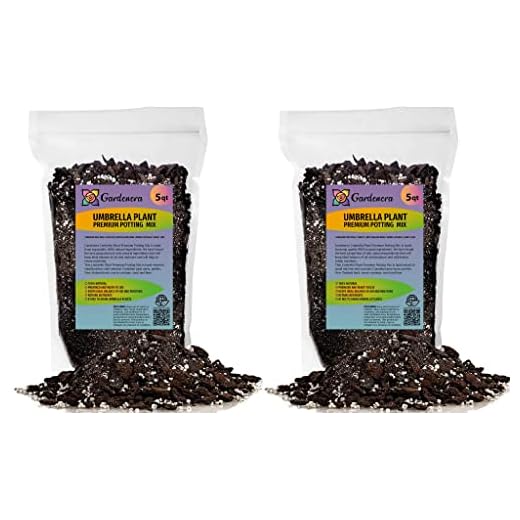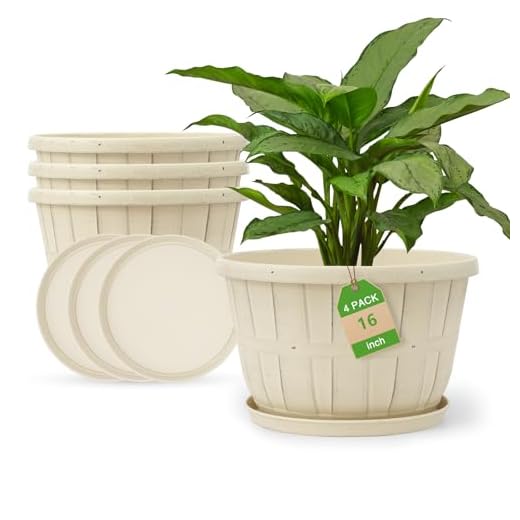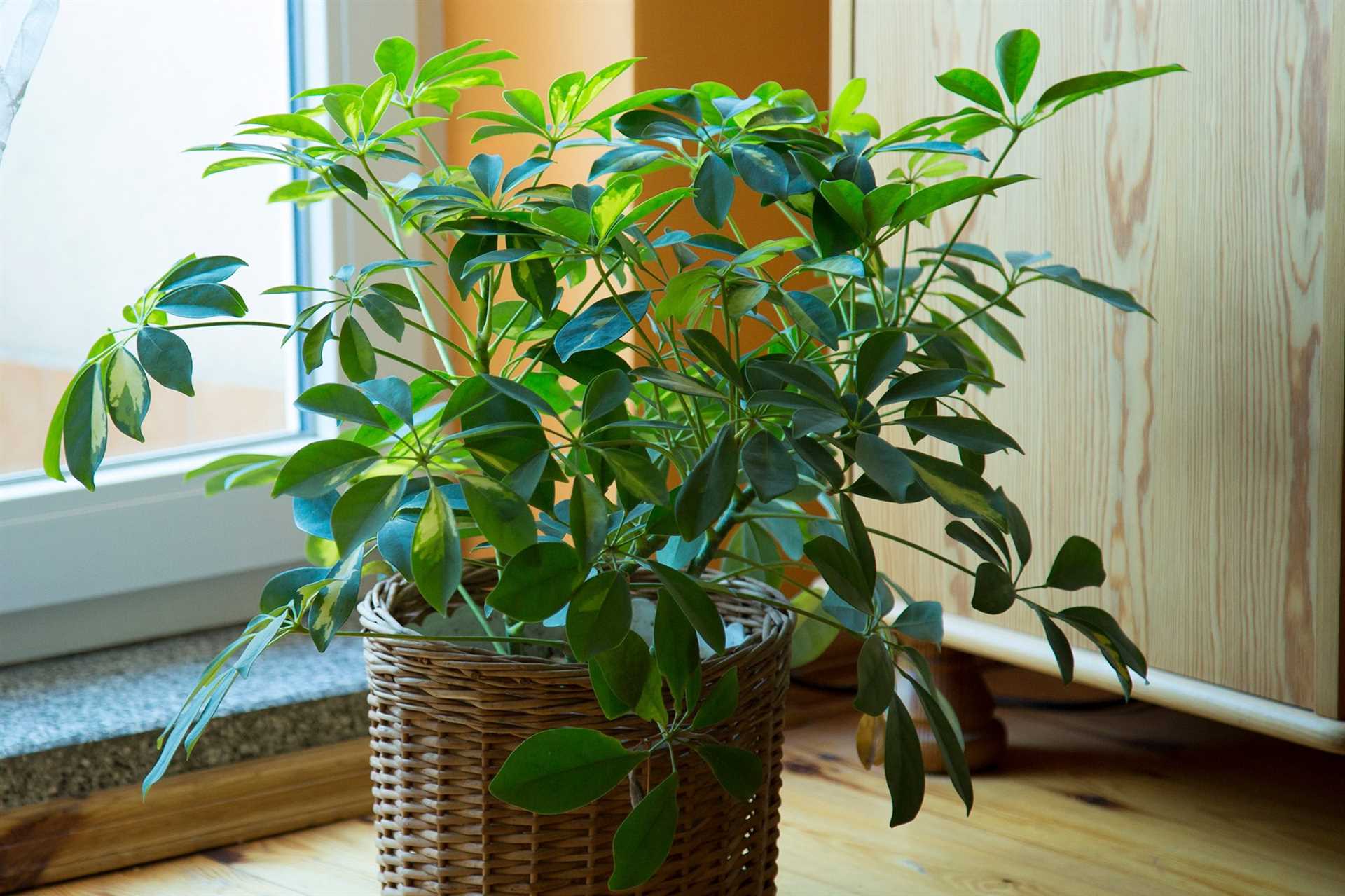




For optimal growth of your Schefflera, select a container with good drainage. A pot with drainage holes allows excess water to escape, preventing root rot. Aim for a size that gives the roots ample space to expand without being overly large, as this can lead to water retention issues.
The ideal medium for your Schefflera should be well-aerated and moisture-retentive. A mix of peat, perlite, and pine bark provides excellent drainage while holding enough moisture for healthy growth. This combination ensures roots receive the nutrients they need without becoming waterlogged.
This article is designed for both novice and experienced plant enthusiasts looking to enhance the health and appearance of their Schefflera. By following these specific recommendations, you can create an environment that promotes flourishing growth and vibrant foliage. Key insights will include ideal pot dimensions, preferred medium, and tips for maintaining optimal moisture levels.
Best Container and Medium for Umbrella Plant
For a thriving Schefflera, selecting the right container is essential. A pot with drainage holes is critical to prevent waterlogging, which can lead to root rot. Opt for a slightly larger container than the current root ball to provide ample space for growth. Materials such as terracotta or plastic can work well, with terracotta allowing for better air exchange.
The growing medium should be well-draining yet moisture-retentive. A mix of potting soil, perlite, and orchid bark can create an ideal environment. This combination ensures that roots receive enough air while retaining necessary moisture. Maintaining the correct pH level, around 6.0 to 7.0, is also beneficial for nutrient absorption.
Container Size and Placement
Choosing a container size that accommodates the plant’s growth is important. A pot that is too small may restrict root development, while one that is too large can retain excess moisture. When placing the container, ensure it receives indirect sunlight, as direct exposure can scorch the leaves.
- Ensure proper drainage with holes at the bottom of the container.
- Use a slightly larger size than the current root ball.
- Position the pot in a location with bright, indirect light.
Mixing Ingredients for the Medium
Creating a suitable growing medium involves balancing several components. Combine equal parts of potting mix, perlite, and bark to enhance drainage and aeration. This mixture supports healthy root growth and prevents compaction over time.
| Component | Function |
|---|---|
| Potting Mix | Provides nutrients and moisture retention |
| Perlite | Enhances drainage and aeration |
| Orchid Bark | Improves texture and airflow |
By carefully selecting the right container and growing medium, you can ensure the health and vitality of your Schefflera, promoting robust growth and lush foliage.
Choosing the Right Pot Material for Your Umbrella Plant
When selecting a container for your green companion, the material plays a significant role in its health and growth. Terra cotta, plastic, metal, and ceramic are the most common options, each offering distinct benefits and drawbacks.
Terra cotta is a popular choice due to its porous nature, allowing for better airflow to the roots and promoting healthy drainage. However, it can dry out quickly, requiring more frequent watering. Plastic containers, on the other hand, retain moisture longer, which can be advantageous in maintaining consistent hydration but may lead to root rot if drainage is insufficient.
Material Comparison
| Material | Benefits | Drawbacks |
|---|---|---|
| Terra Cotta | Good drainage, breathable | Dries out quickly |
| Plastic | Lightweight, moisture retention | Less airflow, potential root rot |
| Ceramic | Decorative, good insulation | Heavy, can be expensive |
| Metal | Durable, modern look | Can overheat, may rust |
Selecting the right material involves considering your watering habits, climate, and aesthetic preferences. Ensure proper drainage holes are present, regardless of the choice, to support the health of your leafy friend.
Optimal Pot Size to Promote Healthy Growth
The ideal container for your leafy companion should have a diameter that is approximately 2 to 4 inches larger than the root ball. This allows ample room for root expansion while minimizing the risk of water retention and root rot.
A larger vessel encourages healthier development by providing more space for moisture and nutrients. However, excessively oversized containers may lead to overwatering, as the excess medium can retain too much moisture. Aim for a balance that supports growth without overwhelming the roots.
Key Factors to Consider
- Drainage: Ensure the chosen container has sufficient drainage holes to prevent water accumulation.
- Material: Lightweight materials like plastic or fiberglass help with mobility, while ceramic or clay can provide stability.
- Depth: A depth of at least 10 to 12 inches is recommended to accommodate root growth.
When repotting, assess the root system’s condition. If roots are tightly coiled or circling the bottom, it may indicate the need for a larger container. A gradual increase in size can encourage a robust root network without causing shock to the plant.
Regularly check the moisture levels in the medium to ensure the plant thrives in its new environment. Adjust watering frequency based on the size of the container and the plant’s growth stage.
Soil Composition: Key Ingredients for Umbrella Plants
Using a well-balanced mixture is fundamental for the healthy growth of your leafy companion. A combination rich in organic matter promotes drainage while retaining necessary moisture.
The ideal blend typically includes components such as peat moss, perlite, and quality compost. Each ingredient plays a specific role in maintaining the right environment for roots to thrive.
Key Ingredients
- Peat Moss: This organic material enhances moisture retention and provides acidity, which is beneficial for growth.
- Perlite: A lightweight volcanic glass that improves aeration and drainage, preventing root rot.
- Compost: Enriches the mix with nutrients, fostering healthy development and ensuring a balanced ecosystem.
Additionally, incorporating a small amount of coarse sand can further improve drainage, which is vital in preventing waterlogging. The combination of these elements creates an ideal setting for optimal growth and flourishing foliage.
Monitoring the moisture level in this mixture is critical. It should remain damp but not soggy, allowing the roots to breathe while absorbing nutrients efficiently.
Drainage Solutions to Prevent Root Rot
Utilizing a container with adequate drainage holes is fundamental in avoiding excess moisture around the roots. Ensure that the chosen vessel allows water to escape freely, which helps maintain an optimal balance of hydration in the growing medium.
In addition to the container, incorporating materials that enhance drainage is crucial. Mixing perlite or coarse sand into the growing medium can increase aeration and improve water flow, reducing the risk of root rot.
Additional Strategies for Effective Drainage
- Layering Technique: Create a drainage layer at the bottom of the container using small stones or gravel. This will help excess water to settle away from the roots.
- Monitoring Watering: Regularly check the moisture level of the growing medium. Allow the top inch to dry out before watering again to prevent standing water.
- Choosing the Right Medium: Select a mix specifically designed for good drainage. A combination of organic materials and inorganic additives can help achieve the right consistency.
- Elevated Planting: Consider using pots with elevated bases that allow water to drain away quickly and do not sit in excess moisture.
Implementing these drainage solutions will significantly reduce the chances of root rot, ensuring a healthy and thriving environment for your green companion.
pH Levels: Ensuring Ideal Conditions for Umbrella Plants
Maintaining appropriate pH levels is key to the health of the umbrella plant. Ideally, the pH should range from 6.0 to 7.5, providing a slightly acidic to neutral environment. This range promotes optimal nutrient absorption, enhancing the overall vitality and growth of the foliage.
Testing the pH can be accomplished easily with home kits or meters. If the pH is too low, adding lime can help raise it, while sulfur can be used to lower excessively high levels. Regular monitoring ensures that any adjustments are made promptly, preventing nutrient deficiencies or toxicities.
Factors Influencing pH Levels
Several factors can affect the pH of the growing medium:
- Water Quality: Tap water can vary widely in pH. Using distilled or rainwater may help maintain a more stable environment.
- Fertilizers: Some fertilizers can alter pH levels, so it’s crucial to choose products that align with the desired range.
- Organic Matter: Incorporating compost can naturally buffer pH levels and improve soil structure.
Correct pH not only influences nutrient uptake but also affects microbial activity in the substrate, which is vital for plant health. Regular adjustments and monitoring will create a thriving environment for your green companion.
Repotting Techniques for Long-Term Plant Health
Choose the right timing for repotting, ideally during the spring when growth begins. This allows the roots to adapt quickly to new conditions. First, prepare a container that is slightly larger than the current one, ensuring it has proper drainage holes.
Gently remove the plant from its old container, taking care not to damage the roots. If the roots appear tightly bound, tease them apart to encourage new growth. Place the plant in the new container, adding fresh substrate around the roots. Water thoroughly after repotting to eliminate air pockets.
Aftercare Recommendations
- Monitor moisture levels, allowing the top inch of the medium to dry before watering again.
- Provide indirect sunlight to avoid stressing the plant during the adjustment period.
- Avoid fertilizing immediately after repotting; wait about a month to give the roots time to establish.
Following these techniques ensures that your green companion remains healthy and thrives in its new environment. Regular checks and adjustments will lead to a flourishing plant over time.
Best pot and soil for umbrella plant
Features
| Part Number | MAIN-UMBRELLA-10QT |
| Model | MAIN-UMBRELLA-10QT |
| Color | Umbrella Plant Potting Mix |
| Size | 10 Quart Bag |
Features
| Part Number | POTHOS-10QT |
| Model | POTHOS-10QT |
| Color | Pothos Potting Mix |
| Size | 10 Quart Bag |
Features
| Color | Beige |
| Size | 16 inch-4 pack |
Features
| Part Number | AI209 |
| Model | PH20 |
| Warranty | Two-Year limited warranty for the instrument, Six-Month limited warranty for the electrode(s). |
| Color | Regular Kit |
| Is Adult Product | |
| Size | Regular Kit |
Video:
FAQ:
What type of pot is best for an umbrella plant?
The best pot for an umbrella plant is one that has good drainage. A terracotta or ceramic pot with drainage holes at the bottom allows excess water to escape, preventing root rot. The size of the pot is also important; it should be slightly larger than the root ball of the plant to allow for growth. Additionally, choosing a pot with a wider base can provide stability to the tall umbrella plant, helping to prevent it from toppling over.
What kind of soil should I use for my umbrella plant?
For an umbrella plant, a well-draining potting mix is ideal. A blend of peat moss, perlite, and vermiculite works well, as it retains moisture while allowing excess water to drain away. If you prefer, you can also use a commercial houseplant mix that contains these components. It’s important to avoid heavy garden soil, as it can become compacted and hinder drainage, which can lead to root issues. Mixing in some sand can also enhance drainage and aeration in the soil.







